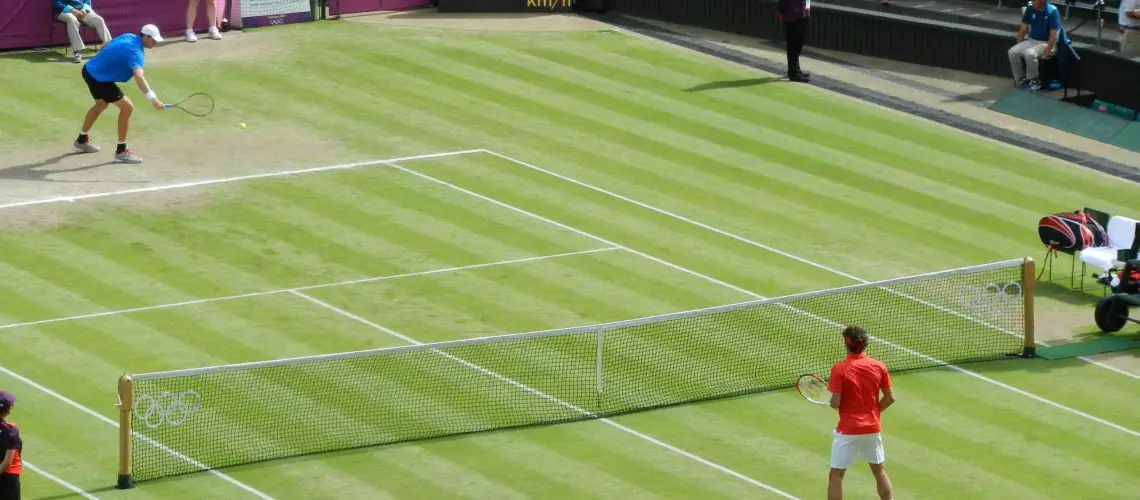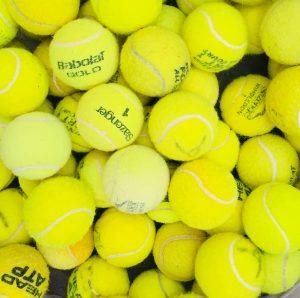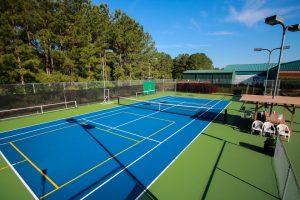We may earn money or products from the companies mentioned in this post.
Introduction

Tennis is a sport that requires agility, speed, and precision Every small detail can make a big difference in performance on the court One often overlooked aspect of tennis gear is socks Yes, you read that right – socks! Tennis socks play a crucial role in enhancing both performance and comfort during intense matches But it doesn’t stop there The right choice of tennis socks can also help prevent injuries and keep your feet feeling fresh throughout the game
The Importance of Tennis Socks in Performance and Comfort
When it comes to playing tennis, every movement counts Whether it’s running to reach a ball or making quick lateral movements, your feet are constantly in motion And this is where the importance of tennis socks comes into play
Tennis-specific socks are designed with features that provide cushioning, support, and stability to maximize your performance on the court They offer strategic padding in high-impact areas like the heel and toe to absorb shock from sudden stops and jumps This not only helps reduce fatigue but also enhances your agility by providing a stable base for quick movements
In addition to performance benefits, tennis socks are crafted with moisture-wicking materials that keep your feet dry even during intense matches when sweat is inevitable This not only prevents discomfort but also reduces the risk of blisters and skin irritation caused by excessive moisture
The Impact of the Right Sock Choice on Injury Prevention
Choosing appropriate tennis socks goes beyond just comfort and performance; they can have a significant impact on injury prevention as well Tennis involves repetitive movements that put strain on various parts of your feet
By wearing specially-designed tennis socks, you can minimize the risk of common foot problems such as plantar fasciitis, ankle sprains, or Achilles tendonitis These socks provide targeted support and compression to key areas, reducing the chances of overuse injuries The cushioning and padding in the right places also help absorb impact and protect your feet from stress-related injuries
Overview of Key Factors to Consider When Choosing Tennis Socks
Now that you understand the importance of tennis socks, let’s delve into the factors you should consider when selecting the perfect pair:
-
Material:
Look for moisture-wicking fabrics like polyester or nylon blends that keep your feet dry and prevent blisters -
Cushioning:
Opt for socks with adequate padding in high-impact zones such as the heel and toe for added comfort and shock absorption -
Sizing:
Ensure a proper fit by choosing socks that match your shoe size Avoid excessively tight or loose-fitting options -
Arch Support:
Consider socks with built-in arch support to provide stability and reduce strain on your arches during lateral movements -
Durability:
Look for reinforced heels, toes, and seams to ensure longevity, especially if you play tennis frequently
Making a conscious choice about what goes on your feet can have a tremendous impact on your overall performance, comfort, and foot health So next time you gear up for a game of tennis, don’t forget to give due attention to those seemingly insignificant yet crucial pieces – your tennis socks!
Material Selection: The Foundation for Comfort and Performance
When it comes to choosing the right socks for ultimate comfort and performance, one of the key factors to consider is the material Two popular options are cotton and synthetic materials like polyester, nylon, and spandex Each has its own set of pros and cons that can greatly impact your overall experience
Cotton vs Synthetic Materials
Cotton socks have long been a go-to choice for many due to their softness and breathability They provide a comfortable feel against the skin and are perfect for everyday wear However, cotton does have its drawbacks It tends to retain moisture, which can lead to dampness and discomfort during physical activities or in hot weather
On the other hand, synthetic materials offer several advantages that make them ideal for athletic performance Polyester, nylon, and spandex blend together to create socks that are moisture-wicking, durable, and stretchy These fabrics quickly draw sweat away from your skin, keeping your feet dry even during intense workouts or long hikes
Moisture-Wicking Properties for Dryness and Odor Control
One crucial aspect of sock selection is their ability to wick away moisture effectively Breathability plays a vital role in preventing blisters, fungal infections such as athlete’s foot, and unpleasant odors caused by bacterial growth
In comparison to cotton socks that tend to trap moisture close to the skin, synthetic materials excel at evaporating sweat rapidly Fabrics like polyester efficiently move moisture away from your feet towards the outer layer of the sock where it can evaporate more easily This not only keeps your feet dry but also reduces the risk of developing foot-related issues during prolonged physical activity
Thickness and Cushioning Options
When it comes to sock thickness, you’ll find a range of options available Thin socks are often preferred for their lightweight and breathable nature, making them suitable for activities like running or cycling They provide a close-to-foot feel without adding unnecessary bulk
On the other hand, thick socks offer additional cushioning and support, which can be beneficial for high-impact activities like hiking or playing sports that involve quick direction changes These socks provide extra comfort by absorbing shock and reducing pressure on your feet
Targeted Cushioning in High-Impact Zones
To further enhance performance and comfort, many athletic socks feature targeted cushioning in high-impact zones such as the heel and ball of the foot This strategic padding helps to absorb impact forces and reduce the risk of blisters or foot fatigue during intense physical activity
The cushioning level can vary depending on personal preference and activity type Some individuals prefer minimal cushioning for a more natural feel, while others may opt for maximum cushioning to enhance shock absorption and overall comfort
In conclusion, choosing the right materials, moisture-wicking properties, thickness, and cushioning options play a crucial role in determining the comfort and performance of your socks Consider your specific needs and preferences when selecting socks for different activities to ensure optimal support, dryness, breathability, and overall foot health
Fit and Design Features: Ensuring a Snug, Supportive Experience

When it comes to choosing the perfect tennis socks, fit and design features play a crucial role in providing a comfortable and supportive experience on the court From sock height options to compression technology and arch support features, each element contributes to your overall performance and well-being during matches Let’s explore these aspects in detail
Sock Height Options: Finding Your Perfect Fit
Tennis socks come in various heights, allowing players to choose according to their preferences and specific needs Whether you opt for no-show, low-cut, quarter, crew or mid-calf socks, each height option offers unique benefits
Factors such as ankle support and personal style can influence your choice of sock height If you require extra ankle stability during quick lateral movements, opting for mid-calf or crew socks might be ideal On the other hand, if you prefer a more minimalistic look or want freedom of movement around your ankles, no-show or low-cut socks could be your go-to option
Pros:
Each sock height has its advantages No-show socks provide a sleek appearance while keeping your feet cool Low-cut socks offer a balance between coverage and breathability Quarter-length socks deliver additional protection for your ankles without restricting movement Crew and mid-calf socks provide maximum coverage and support for those who need it
Cons:
It’s important to consider that higher sock heights may increase heat retention around the calves during intense matches Additionally, some players find longer sock lengths less aesthetically appealing compared to shorter options
Compression Technology: Boosting Performance through Blood Flow
In recent years, compression technology has gained popularity among athletes due to its ability to enhance blood flow and provide muscle support Tennis players can also benefit from wearing compression socks during matches
Compression socks work by applying pressure to the legs, promoting blood circulation and reducing muscle vibration This improved blood flow helps deliver oxygen and nutrients to the muscles, resulting in reduced fatigue and quicker recovery times between points
Benefits:
By wearing compression socks, tennis players can experience reduced muscle soreness, decreased risk of cramps, enhanced performance, and faster recovery after intense matches or training sessions
Choosing the Right Level of Compression:
When selecting compression socks, it’s essential to consider your specific needs Different levels of compression exist, typically measured in millimeters of mercury (mmHg). Lower mmHg values offer milder compression suitable for everyday wear or players with no specific medical conditions Higher mmHg values provide firmer compression that can assist with more severe muscle fatigue or conditions like shin splints
Arch Support Features: Stability and Injury Prevention
The arches of your feet play a vital role in maintaining balance and absorbing impact during tennis movements That’s why having proper arch support is crucial for preventing injuries such as plantar fasciitis or foot fatigue
Tennis socks often incorporate various arch support technologies to provide stability and minimize stress on the arches These technologies can include targeted cushioning zones or built-in elastic bands designed to offer extra support where you need it most
Types of Arch Support Technologies:
Some popular arch support features found in tennis socks include anatomical designs that contour to the shape of your foot, padded zones that cushion high-impact areas under the arches, and elastic bands that create gentle compression around the midfoot for added stability
Identifying Your Arch Type:
To select the best fit for your arches, it’s important to identify your arch type You can do this by performing a simple wet test or consulting with a podiatrist Once you know whether you have high, medium, or low arches, you can choose tennis socks that offer the appropriate level of support for your specific needs
By considering sock height options, compression technology, and arch support features when selecting tennis socks, you can ensure a snug and supportive experience on the court Remember to prioritize personal comfort and functionality to elevate your performance while keeping your feet happy and injury-free
Top Tennis Socks Brands & Recommendations

Reviewing popular sock brands on the market (eg, Nike, Adidas, Thorlo)
When it comes to choosing the perfect pair of tennis socks, there are several reputable brands that stand out in terms of quality and performance Some of the most well-known names in the industry include Nike, Adidas, and Thorlo
1 Comparing quality, price points, available features by brand
Nike is renowned for its innovative designs and cutting-edge technologies Their tennis socks offer exceptional cushioning and support while maintaining breathability Adidas also offers a wide range of options with different levels of cushioning and compression to suit individual preferences Thorlo, on the other hand, is known for their high-quality materials and durability
2 Notable product lines for tennis-specific socks
All three brands have dedicated lines specifically designed for tennis players Nike’s “Elite” series boasts advanced moisture-wicking properties to keep your feet dry during intense matches Adidas’ “ClimaLite” collection focuses on temperature regulation to prevent discomfort caused by sweat accumulation Thorlo’s “Experia” line combines comfort with targeted cushioning in key areas like the heel and ball of the foot
Specific recommendations based on player needs and preferences
1 Best socks for optimal cushioning and comfort
If you prioritize cushioning and comfort above all else, consider trying out Nike’s “Elite Cushioned” socks or Thorlo’s “Thick Cushion Tennis Crew” These options provide ample padding without sacrificing breathability or mobility
2 Top choices for players seeking extra support or compression
For players who require extra support or compression, Adidas’ “Compression Tennis Socks” and Thorlo’s “Experia Compression” socks are excellent choices These options offer targeted compression in key areas to enhance stability and reduce muscle fatigue
3 Recommendations for those prioritizing moisture-wicking properties
If keeping your feet dry and comfortable is your main concern, Nike’s “Elite Lightweight No-Show” socks and Adidas’ “ClimaLite Superlite Low Cut” socks are worth considering These socks feature advanced moisture-wicking technologies that draw sweat away from the skin, keeping you cool and dry throughout the game
Conclusion

Choosing the best tennis socks is a crucial decision that can greatly impact your performance on the court Throughout this article, we have discussed several key factors to consider when selecting tennis socks
Recap of Key Factors
In summary, it’s important to prioritize factors such as cushioning, moisture-wicking properties, breathability, arch support, and durability when choosing tennis socks These features can help enhance your comfort levels during intense matches and reduce the risk of blisters and injuries
Prioritize Your Needs
While there are general guidelines for selecting tennis socks, it’s essential to prioritize your specific needs and preferences Consider factors like foot shape, playing style, personal comfort preferences, and any specific foot conditions you may have By doing so, you can find socks that cater to your unique requirements and provide optimal performance and comfort
The Impact of Proper Sock Choice
Never underestimate the impact that proper sock choice can have on your overall performance, comfort levels, and injury prevention Investing in high-quality tennis socks that meet your specific needs will undoubtedly enhance your on-court experience
In conclusion, take the time to research different brands and styles of tennis socks before making a purchase Experiment with various options until you find the perfect fit for you Remember that finding the right tennis socks goes beyond just style – it directly affects how well you perform on the court So don’t overlook this crucial piece of equipment!
Useful Links

Best Tennis Socks | Men’s, Women’s & Compression
Best socks for tennis : r/10s
Best Women’s Tennis & Racquet Athletic Socks
Men’s Socks
Men’s Tennis Socks
Thorlos Rolltop Tennis Socks – Medium White
5 Best Tennis Socks (2022 Reviewed) – TennisFocusOn
Thorlo Socks: Tennis
Thorlos RollTop Tennis Socks
Thorlo T – 11 Roll Top Tennis Socks (Level 3)
Tennis Socks, World’s Best Tennis Coach
Thorlo Tennis Roll Top Socks
Tennis Socks | ChalkTalkSPORTS
Tennis Socks
Buy Tennis Socks Australia | Best Socks for Tennis Players
11 Best Tennis Socks (2022) – For Blisters, Sweat & Comfort
Thorlos Men Tennis Socks TX-13






